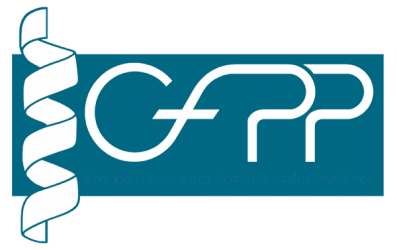Stabilizing motifs as lactamization, lipidation, and amino acid replacement by ethylene glycol linker were introduced into adrenomedullin (ADM) to increase the proteolytic stability. Combination of favorable motifs and previously described disulfide mimetic resulted in highly stabilized analogs with excellent AM1R activity and wild-type-like selectivity toward CGRPR. Dose-dependent vasodilatory effects of the ADM derivatives lasted for several hours in rodents.
The peptide hormone adrenomedullin (ADM) consists of 52 amino acids with a disulfide bond and an amidated C-terminus. Due to the vasodilatory and cardioprotective effects, the agonistic activity of the peptide on the adrenomedullin 1 receptor (AM1R) is of high pharmacological interest. However, the wild-type peptide shows low metabolic stability leading to rapid degradation in the cardiovascular system. Previous work by our group has identified proteolytic cleavage sites and demonstrated stabilization of ADM by lipidation, cyclization, and N-methylation. Nevertheless, these ADM analogs showed reduced activity and subtype selectivity toward the closely related calcitonin gene-related peptide receptor (CGRPR). Here, we report on the rational development of ADM derivatives with increased proteolytic stability and high receptor selectivity. Stabilizing motifs, including lactamization and lipidation, were evaluated regarding AM1R and CGRPR activation. Furthermore, the central DKDK motif of the peptide was replaced by oligoethylene glycol linkers. The modified peptides were synthesized by Fmoc/t-Bu solid-phase peptide synthesis and receptor activation of AM1R and CGRPR was measured by cAMP reporter gene assay. Peptide stability was tested in human blood plasma and porcine liver homogenate and analyzed by RP-HPLC and MALDI-ToF mass spectrometry. Combination of the favorable lactam, lipidation, ethylene glycol linker, and previously described disulfide mimetic resulted in highly stabilized analogs with a plasma half-life of more than 144 h. The compounds display excellent AM1R activity and wild-type-like selectivity toward CGRPR. Additionally, dose-dependent vasodilatory effects of the ADM derivatives lasted for several hours in rodents. Thus, we successfully developed an ADM analog with long-term in vivo activity.


